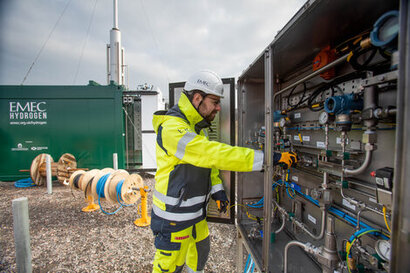
Written by global energy consultants Xodus Group, ‘Commercial Models for Future Hydrogen Production’ examines the export potential for hydrogen produced by Scotland’s renewable electricity sector.
It set outs what infrastructure would be needed for the transportation of green hydrogen at scale, and the different commercial models that could be used to fund, own, and operate such infrastructure.
The report uses a range of scenarios for Scotland’s potential future hydrogen generation, with a focus on ScotWind and INTOG offshore wind projects which might dedicate some of their output to hydrogen electrolysis.
Options for hydrogen transportation, which are detailed in the report, include injection into domestic gas networks or storage as well as export to mainland Europe by ship or pipeline.
The opportunities afforded by an indicative trunk pipeline connecting Scotland to Germany are explored, with feed-in pipelines from key locations in Shetland, Orkney, Cromarty Firth, and St Fergus. The pipeline concept – detailed in a recent report by the Net Zero Technology Centre’s (NZTC) Hydrogen Backbone Link project, of which Crown Estate Scotland was a partner for Phase One – complements the wider aspirations of work being undertaken by NZTC and highlights the key role that hydrogen could play in helping the UK meet its climate objectives.
The report sets out a range of recommendations and options for government and the wider Scottish public sector. These include:
Increasing the international visibility of the export pipeline potential Scotland has to offer
Establishing the timing of the hydrogen supply that may be produced from offshore wind projects, including from ScotWind and INTOG projects
Increased engagement with partners in mainland Europe around offtake opportunities
“Green hydrogen has the potential to play a huge role in decarbonising key industries across Europe, and there is a clear opportunity for Scotland to contribute with our growing offshore renewables sector” said Ben Miller, Development Manager with Crown Estate Scotland. “This report sets out various options and models for funding, owning, and operating large-scale infrastructure to facilitate the hydrogen sector, and highlights the challenges that would need to be overcome in order to transport hydrogen at scale. We look forward to collaborating with industry and government to help unlock the benefits of green hydrogen for Scotland.”
For additional information:

